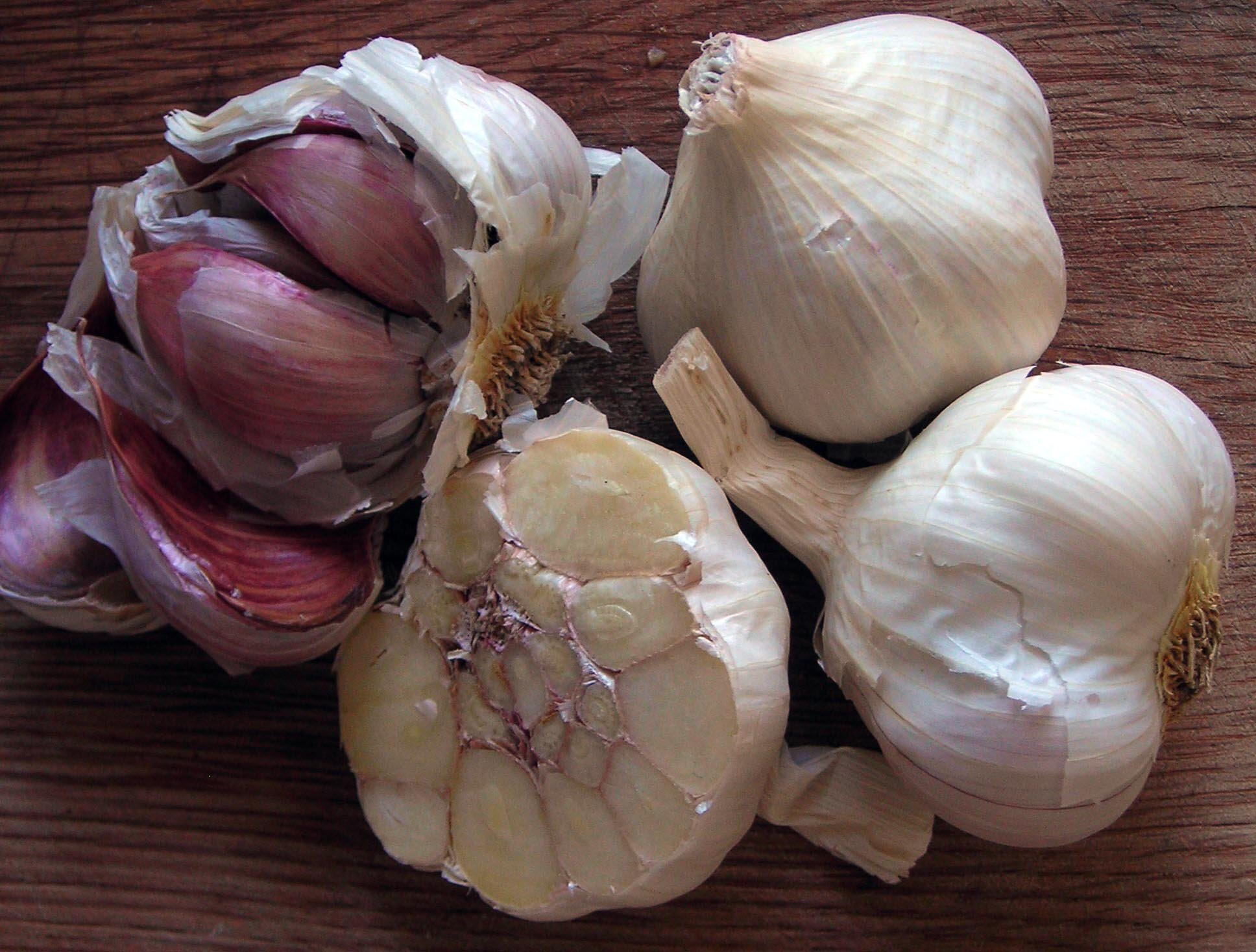Gorgeous Garlic
“Garlic is divine. Few food items can taste so many distinct ways, handled correctly. Misuse of garlic is a crime...Please, treat your garlic with respect...Avoid at all costs that vile spew you see rotting in oil in screwtop jars. Too lazy to peel fresh? You don’t deserve to eat garlic.”
Garlic (Allium sativum) has a convoluted history. At times it has been considered food of the gods. Garlic was placed by the ancient Greeks on the piles of stones at crossroads, as a supper for Hecate. She is variously associated with crossroads, entrance-ways, light, magic, witchcraft, knowledge of herbs and poisonous plants, ghosts, necromancy, and sorcery. In other era, garlic has been seen as poverty food. In Ancient Rome, it was "much used for food among the poor." These days, garlic is available and loved by most. It is thought that garlic is native to Siberia, but spread to other parts of the world over 5000 years ago. Garlic is also considered medicinal, fighting cardiovascular disease, cancer, and a boost to the immune system.
There are generally two types of real garlic, and another garlic-like plant:
hardneck garlic
A. sativum var. ophioscorodon called Ophioscorodon, or hard-necked garlic. It is sometimes considered to be a separate species, (Allium ophioscorodon). These all produce large, easy to peel cloves and tend to be on the hot and spicy side. For our region, try Spanish Roja, Carpathian, or German Red. The hard-necked garlics are more difficult to grow in hot climates.
softneck garlic
A. sativum var. sativum, or soft-necked garlic, includes artichoke garlic, silverskin garlic, and creole garlic. These are milder and produce smaller cloves but are easiest to grow in Arizona. Some good softneck varieties are Inchelium Red, California Early, Chet's Italian, Mild French, and Silverskin.
elephant garlic
A. ampeloprasum var. ampeloprasum, or elephant garlic, is not a true garlic, and grow enormous bulbs, but has a much more mild flavor. This plant will need more space to grow.
Growing Garlic
Garlic is usually available as bulbs in the fall, which you break up into cloves for planting. Garlic should be planted in October. Select clean, dry bulbs, break them into individual cloves and plant the same day as divided. Plant 1 to 3 inches deep and 4 to 6 inches apart. Rows should be 12 to 18 inches apart. Irrigate immediately after planting. Garlic cloves require 4 to 6 weeks of cool weather (less than 40 degrees F) after planting to vernalize the plant so it will produce bulbs.
During fall and winter, the bulb will produce roots and some top growth. As we head into spring and summer, keep plants well-watered and if you are lucky and get flowers, pick them before the flowers open (garlic scapes are the flower buds and they are delicious) and don’t let any flowers continue as they will cause the plant to shift resources into seed production rather than bulb production.
In June/July plants will start to turn brown which means the bulbs are ready. You will hang them to “cure” which is basically allowing the skins to dry, in a dry, shady place. If it is raining, keep them from getting wet.
Curing garlic.







